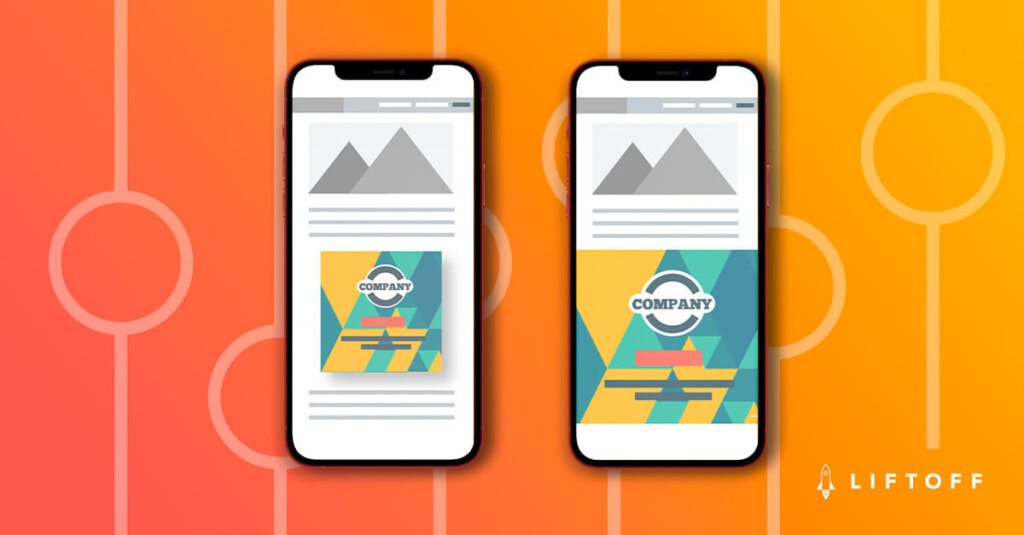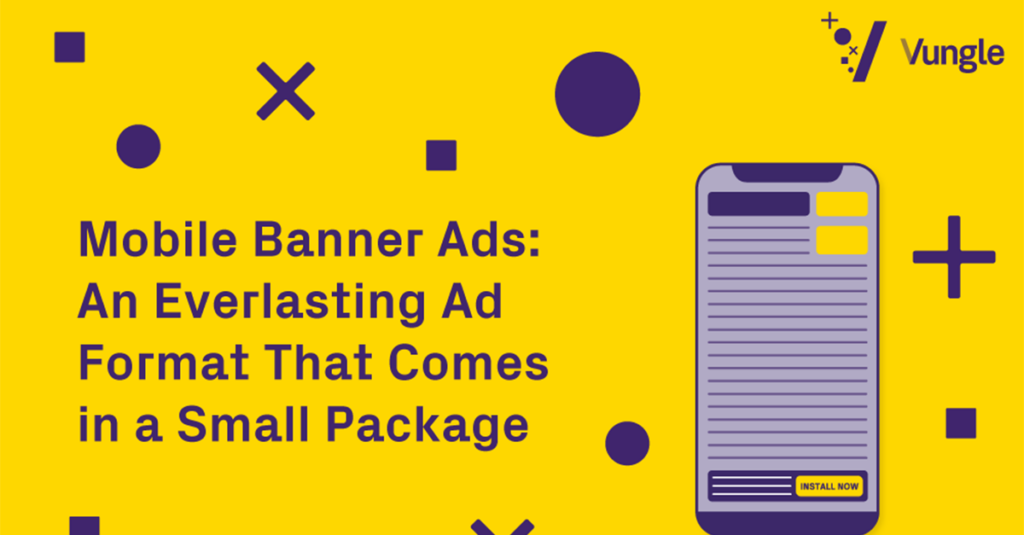
How to Leverage Banner and Native Ads to Maximize Your App’s Revenue
Mobile app developers need a monetization strategy to generate revenue without impacting user experience. Regarding ad formats, developers have a wide range to choose from: full-screen ads (rewarded video, interstitial) and non-fullscreen (banners, MREC and native). Depending on the app, it can be challenging for developers to choose the right formats.
Banners and native ads in particular are too often disregarded by developers. Critics often cite the outdated feel of banners that disrupt the app experience and generate little revenue. While native ads are criticitzed for their limited flexibility.
In this blog, we outline the fundamentals of banner and native ads, explore their benefits and drawbacks, and break down best practices for integrating them into gaming and non-gaming mobile apps.
Banner ads: An eye-catching and versatile companion
Banner ads are rectangular advertisements that typically appear at the top or bottom of the screen within a mobile app. They are designed to capture user attention without obstructing the core app content.
Here are some key benefits of banner ads:
- Visibility: Banner ads catch the eye because of their strategic placement, ensuring users notice them easily.
- Easy integration: Implementing banner ads is relatively straightforward, and various ad networks provide SDKs and documentation to facilitate integration.
- Versatility: Banner ads can accommodate different ad sizes and formats, making them compatible with various apps and screen sizes.
That said, there are drawbacks to banner ads:
- Limited real estate: Due to their smaller size, banner ads have limited space for conveying information or engaging users.
- Ad blindness: Users have been known to develop banner ad blindness over time. Banner ads are everywhere, and users become accustomed to their presence and pay them less attention over time.
Best practices for banner ads
By grasping the fundamentals of banner ads, developers can leverage them to great effect if they integrate them properly into their apps. Here are a few best practices for getting the most from the format:
- Place ads strategically. Position banner ads at the top or bottom of the screen to maximize visibility without disrupting the user experience.
- Use relevant content. Ensure that banner ads are contextually relevant to the app’s content to increase user engagement and CTRs.
- Optimize ad designs Partner with ad networks that deliver visually appealing, attention-grabbing banner ads that align with your app’s design aesthetics. An attractive ad that considers the app’s design can create a big impact.
- Use frequency capping. Avoid bombarding users with excessive banner ads by implementing frequency capping to maintain a positive user experience.
Native ads: creating a seamless user experience
Native ads are designed to blend with the app’s user interface, appearing as natural content within the app. They mimic the look and feel of the app’s content, providing a non-intrusive ad experience.
The unique design and fit of native ads have several clear advantages:
- Improved user experience: Native ads fit organically within the app, reducing disruption and enhancing the overall user experience.
- Higher engagement: Due to their non-disruptive nature, native ads tend to generate higher user engagement and CTRs.
- Improved monetization: With seamless integration, native ads can command higher eCPMs (effective cost per mille) and generate increased revenue.
Depending on how they’re integrated, native ads also present new challenges:
- Design difficulties: Creating native ads that blend seamlessly with the app’s UI requires careful design considerations and implementation.
- Limited customization: Native ads may have design flexibility and creative freedom limitations, as they need to adhere to the app’s visual style.
Best practices for native ads
Native ads can see impressive returns if they are well integrated with the app where they appear. To maximize the impact of your native ads, implement best practices from the beginning:
- Align with app design. Ensure that the design, format, and placement of native ads align with the app’s user interface to maintain consistency and enhance user experience.
- Prioritize relevance and context. Display native ads that are relevant to the app’s content. This will increase their effectiveness and user engagement.
- Label ads appropriately. Clearly distinguish native ads from organic content by providing appropriate labels to stay transparent with users. The point is not to trick the user.
- Remember the fundamentals of A/B testing. Continuously experiment with different variations of native ad designs, placements and content to optimize performance and revenue.
For mobile app developers seeking to monetize their apps effectively, both banner and native ads offer unique advantages and challenges. Developers can drive revenue by implementing best practices and analyzing user feedback while maintaining a positive user experience in their gaming and non-gaming apps.
Liftoff Monetize allows you to monetize your app through multiple ad formats: rewarded video, interstitials, banners, MREC, and native across all major platforms. With Liftoff Monetize, you can now use in-app bidding for your native ads on AppLovin’s MAX.
Reach out to your account manager or email us for recommendations on the right ad format mix for your app and how to get started.

